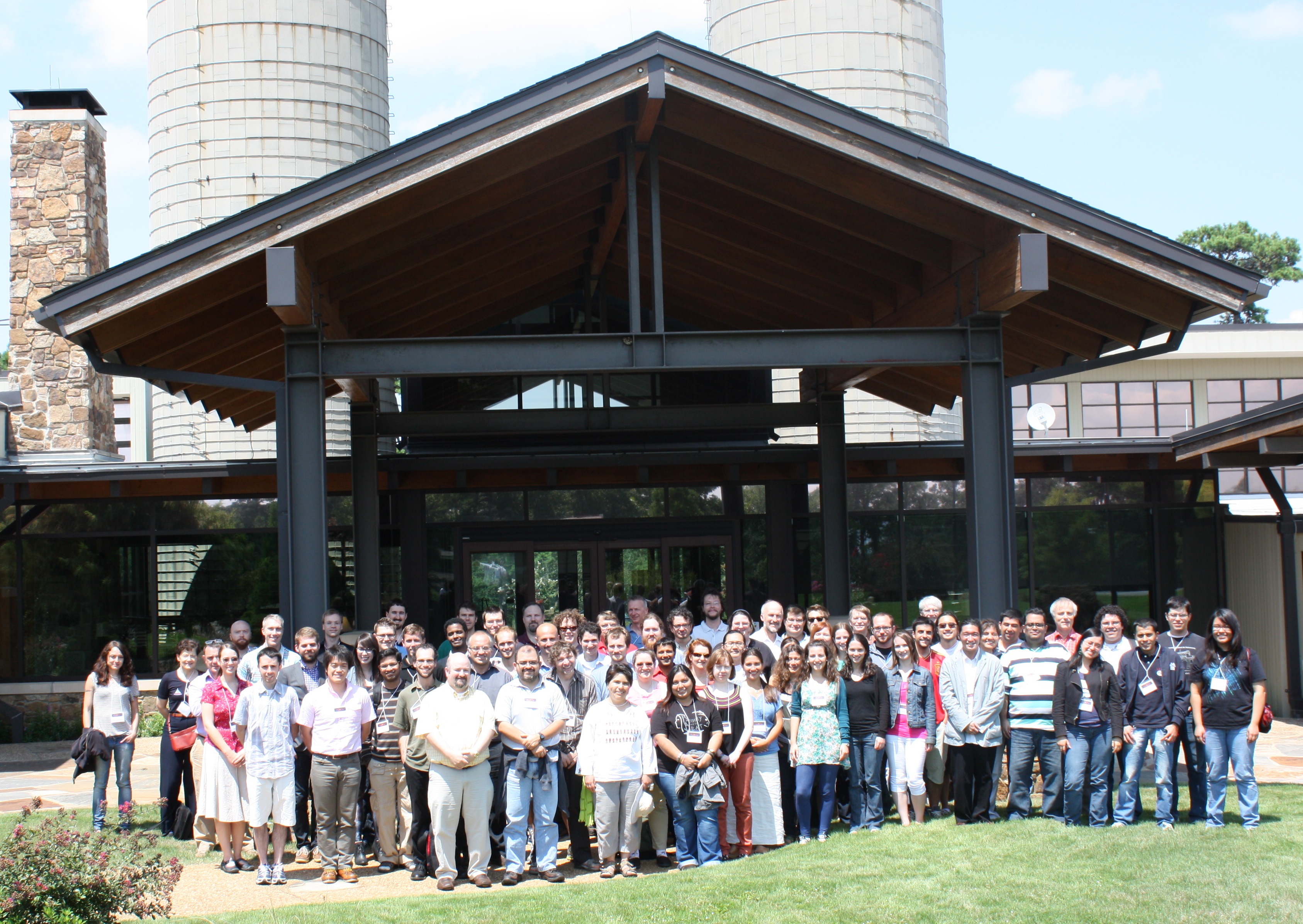Galaxy conference brings international astronomers
Internationally recognized experts from around the globe attended a conference in Arkansas last week focused on the formation and evolution of disk galaxies.
Led by Dr. Marc Seigar, associate professor of physics and astronomy at UALR, the first major astronomy conference to be held in the state convened at the Winthrop Rockefeller Institute at Petit Jean Mountain, Aug. 12-16.
The conference, “Structure and Dynamics of Disk Galaxies,” brought astronomers representing 15 countries and was attended by about 80 scientists renowned in their respective fields.
In addition to the U.S., the conference also beckoned experts from Australia, Belgium, Brazil, Canada, Chile, England, France, Germany, Italy, Japan, Mexico, the Netherlands, Spain, and Switzerland.
Highlights of the meeting included the discovery that galaxies have black holes at their centers with masses that can be revealed by how tightly wound their arms are, according to Seigar.
“This information is being used to put together a picture of the range of sizes in black holes that are found in galaxies near and far,” he said.
In addition, conference attendees Dr. Frank van den Bosch of Yale University and Dr. Laura Sales of the Max-Planck-Institute for Extraterrestrial Physics in Germany showed that computer simulations are producing realistic spiral galaxies for the first time, although it is not clearly understood why.
“We really need a combination of observational data and theoretical simulations to understand galaxy evolution,” said Seigar.
He said the observational data linking the brightness of galaxies to their speed of rotation have existed for over 35 years (a phenomena known as the Tully-Fisher relation); however, only in the last couple of years has this link been reproduced in simulations.
“The simulations include physical laws, so hopefully we can understand the processes by which the observed relationships come about,” said Seigar.
He said that due to the success of the conference, a second conference is being planned for the year 2017, possibly in Hot Springs.
“The conference was extremely well received,” said Seigar. “Professor Ortwin Gerhard, who leads the Max-Planck-Institute, said he enjoyed it very much and would like to come back to Arkansas for another meeting.”
Gerhard and his colleagues in Germany research the dynamics, dark matter, and evolution of galaxies, galactic nuclei, and galaxy clusters.
Professor James Bullock of the University of California-Irvine agreed, saying the gathering was “the best conference he had been to in years.”
The Department of Physics and Astronomy at UALR and the Department of Physics at the University of Arkansas jointly hosted of the event.
Seigar has 15 years of experience and research focused on the structure, morphology and dynamics of galaxies, and their dark matter halos.